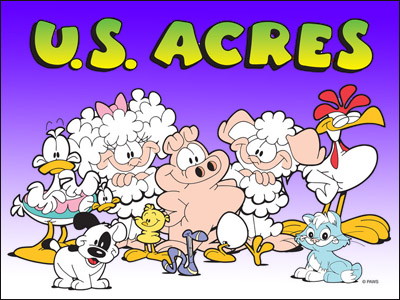Ellis Rogers-Archer wrote to ask…
You have been with both Garfield shows, Garfield and Friends and The Garfield Show, so I will ask you some questions about the latter that have intrigued me.
1. Why the sudden transition to CG? Why didn't they just keep it in 2D like it was before? Was it because of those then-recent direct to video CG films?
The two shows were produced by different companies in different countries under very different financial arrangements. Very few people were involved with both. The company that wanted to do what became The Garfield Show does CG animation and Jim Davis likes CG animation. There was, as far as I know, no discussion whatsoever of doing it a different way. There are all sorts of debates, both creative and financial, about which is preferable but this is the way they wanted to do it.
2. Why do the animals' mouths move when they have dialogue? It's harder to tell if they can talk or not.
This was a problem from the moment that Garfield was first animated. He was the star of the show so they felt he had to have a voice…but he was a cat and in his world, cats don't talk. His "dialogue" in the newspaper strips was in thought balloons. For a while, it seemed to work to have his mouth not move, therefore conveying the idea that what you were hearing were his thoughts.
But as we got into longer stories or more complex stories…or just more stories, it became harder and harder to make that distinction. It was especially a problem in a cartoon where he spent a lot of time talking (or "talking") to other animals. For a while, the rule I came up with was that in a scene with just animal characters — like if Garfield was communicating with Odie or Arlene — mouths moved. If Jon or a human was in the scene, Garfield's mouth didn't move.

This rule did not last long because there had to be scenes where Garfield was "saying" something to Odie but Jon was present…like if the pets were in the back seat of Jon's car and Jon was chatting with them while driving. The animators were sometimes confused and they animated mouths they shouldn't have and…well, we just kind of gave up. Do not harm yourself by straining to figure out the logic behind it all. There was none…or at least none consistently.
3. Why was U.S Acres excluded from the show?
For those who don't know: U.S. Acres was a second newspaper strip that Jim Davis created and which ran in newspapers from 1986 to 1989. In other countries, it was often retitled Orson's Farm because the pun in the name didn't work in other languages and they didn't seem to even "get it" in some English-speaking countries. The episodes were made with two sets of title cards — one for each name — and for reasons unknown to me — a lot of cartoons that got into syndication or onto DVDs had the Orson's Farm title cards on them.

When CBS finally, after years of urging convinced Jim to allow a Saturday morning Garfield cartoon series, he suggested U.S. Acres be a component and that was done; ergo, the title of Garfield and Friends. It was, among other reasons, a way to get more exposure for those characters. When The Garfield Show was proposed years later, U.S. Acres was no longer an active property and besides, the various buyers around the world didn't want the same Garfield series as before. They wanted something they could promote as new and different.
So we gave them a show that was all The Cat and the shows did very well — they're still doing very well — and everyone involved was happy. There were discussions about also doing a new show that would have just been U.S. Acres (or maybe Orson's Farm) but that never quite got put together. As my first agent used to say, "Sometimes, you can make a deal and sometimes, you can't."
